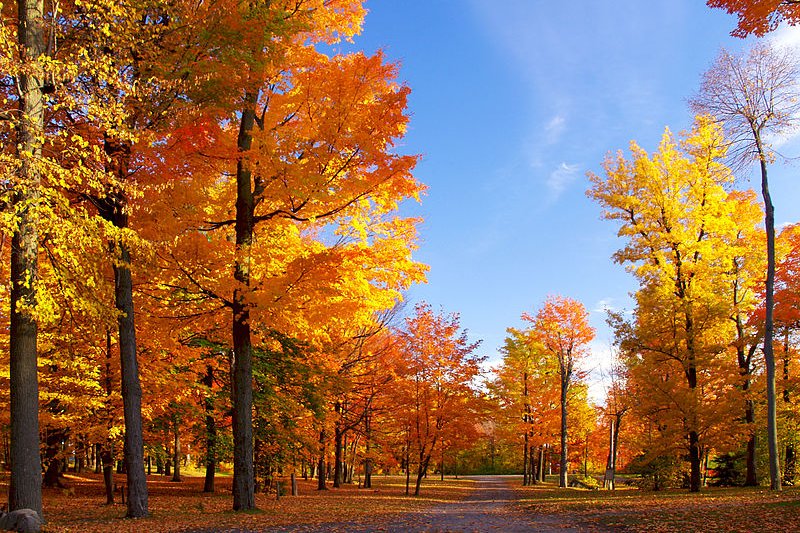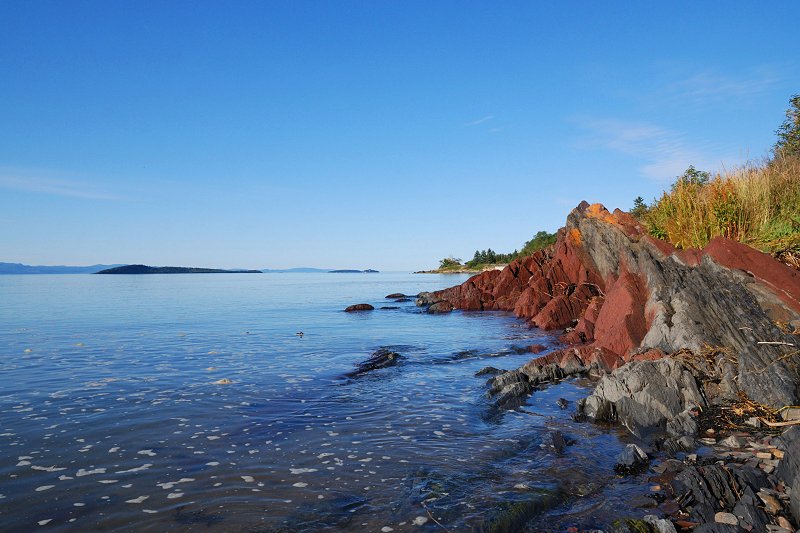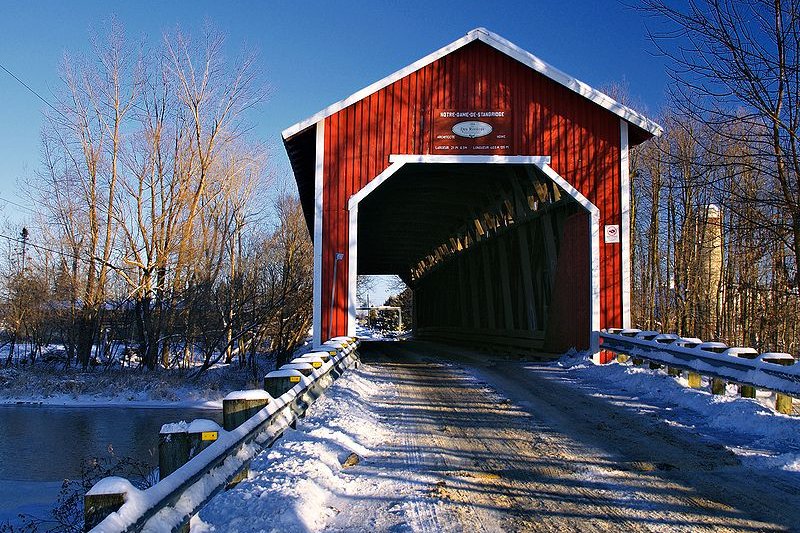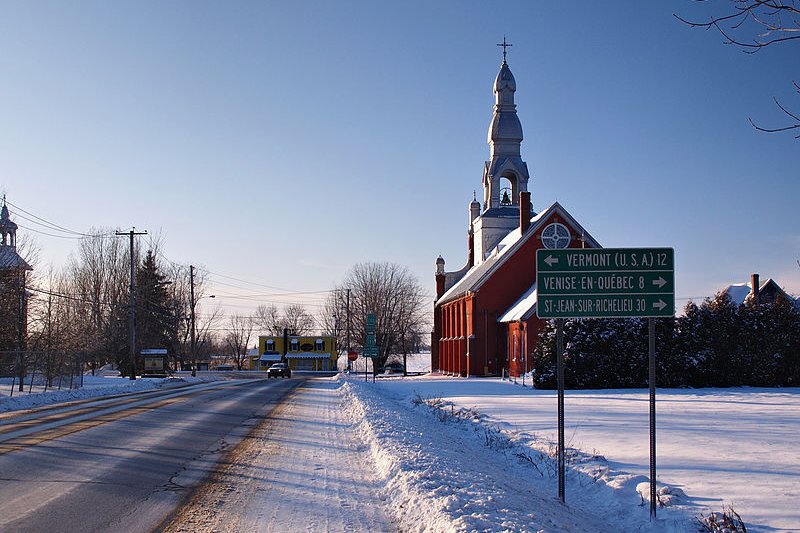 Mont Saint-Grégoire, Quebec
Mont Saint-Grégoire, QuebecSource: https://commons.wikimedia.org/wiki/File:Mt-St-Greg-RueEcureuils-3.jpg
Author: Pierre Bona

Cities and Sights in Quebec
Quebec (QC) is the only province of Canada where French is the sole official language. Covering 1,542,056 sq km (595,391 sq mi), it is the second largest administrative division of Canada after Nunavut. Quebec has a population of 7.9 million people. Its capital is Quebec City while its largest city in Montreal.
The name Quebec comes from the Algonquin word meaning "where the river narrows". When the first European arrived, the Quebec area has inhabited by different indigenous tribes such as the Algonquian, Iroquois and Inuit. French explorer Jacques Cartier is said to be the first European to arrive in the area. He planted a cross in 1534 in Quebec, either at Gaspé or at Old Fort Bay. In his wake came fur traders and trappers.
In 1603 Samuel de Champlain sailed down the St Lawrence River and founded Quebec City. The intention was to establish a French colonial empire. The colony became known as New France or Nouvelle-France. In 1663 King Louis XIV allowed only Roman Catholics to establish settlements in New France. An influx of settlers migrated to New France, bringing its population from 3,000 in 1663 to 60,000 in 1666.
In 1754, an attack by George Washington against French Canadian soldiers (due to repeated aggression by the authorities of New France) set the stage for the 1756 Seven Years' War involving France and Britain. The British under Major General James P. Wolfe defeated the French, leading to the cession of Quebec to Britain (and Louisiana to Spain).
 Saint Lawrence River near Kamouraska, Quebec
Saint Lawrence River near Kamouraska, QuebecSource: https://commons.wikimedia.org/wiki/File:QC_-_Ufer_Sankt_Lorenzstrom_bei_Kamouraska.jpg
Author: Wladyslaw

Following the colonialization of Quebec, the British tried to move more English-speaking settlers into Quebec, but this did not go well. To accommodate the demands of the French-speaking subjects and the newly arrived English-speaking settlers, the Quebec Act of 1774 was enacted. This paved the way for official recognition of French and French culture. It also maintains French civil law, freedom of religion, enabling the Roman Catholic Church to remain.
The Quebec Act offended the British colonies to the south, and led to the American Revolutionary War, won by the Americans, and paving the way for independence of the Thirteen Colonies to form the United States of America.
Meanwhile, there remained friction between the English-speaking Loyalists and the French-speaking population of Quebec. Governor Haldimand decided to lure the Loyalists away from French-speaking Quebec City and Montreal by giving them free land on the north shore of Lake Ontario, creating Frnech-speaking Lower Canada (Bas-Canada) and English-speaking Upper Canada. (Geographically, Lower Canada refers to the lower portion of the Saint Lawrence River, and is to the north of Upper Canada).
 Covered bridge at Notre-Dame-de-Stanbridge, Quebec
Covered bridge at Notre-Dame-de-Stanbridge, QuebecSource: https://commons.wikimedia.org/wiki/File:ND_Stanbridge-Pont_couvert.jpg
Author: Pierre Bona

The French-speaking residents of Lower Canada were still unhappy over being ruled by British governors. In 1838 they made a Declaration of Rights and Declaration of Independence of Bas-Canada. The rebellion, though defeated, forced the British to reassess matters, with the final report recommending that Upper and Lower Canada be united, and the French-speaking Lower Canada be assimilated into British culture, leading to the Act of Union of 1840. Needless to say, it was an unhappy union known as the Province of Canada.
In 1867, with the creation of the Dominion of Canada, the Province of Canada was divided into the provinces of Ontario and Quebec. However friction between the French speaking Quebec and the rest of English-speaking Canada remains. In 1980 and 1995, Quebec's Sovereignist government held referendum asking voters whether they wanted independence for Quebec. Although the idea was voted down on both occasions, it was defeated by just a very narrow margin in 1995. In 2006, the Canadian House of Commons passed the Québécois nation motion recognizing Québécois as a nation within a united Canada.
 St-Pierre-de-Véronne-à-Pike-River, Quebec
St-Pierre-de-Véronne-à-Pike-River, QuebecSource: https://commons.wikimedia.org/wiki/File:St-Pierre-de-Veronne-Pike-River.jpg
Author: Pierre Bona

Today 94.7% of the people of Quebec are able to speak French, whether as a first, second or third language. French is the only official language. However both English and French are required by the Constitution Act, 1867, and any person may use either English or French in the National Assembly and the courts of Quebec.
Visiting Quebec
Montreal's Trudeau Internatioanal Airport acts as the gateway to Quebec. It receives the most flights from major cities in North America and Europe. The other international airport is Quebec City's Jean Lesage Airport.Towns in Quebec
- Quebec City - capital
- Montreal - biggest city
- Chicoutimi
- Drummondville
- Gatineau
- Jonquière
- Magog
- Saguenay
- Sherbrooke
- Terrebonne
- Trois-Rivières
 Latest updates on Penang Travel Tips
Latest updates on Penang Travel Tips

Copyright © 2003-2025 Timothy Tye. All Rights Reserved.

 Go Back
Go Back